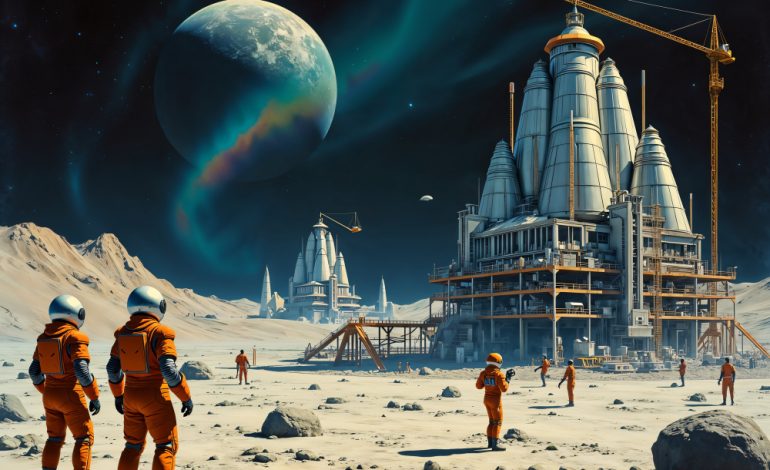
Discoveries That Changed Our Understanding of Space in the Last 10 Years
In just the last ten years, humanity’s view of the cosmos has undergone a profound transformation. Advances in technology, international collaboration, and bold theoretical insights have pulled back layers of cosmic mystery, offering us glimpses of phenomena once thought to be unobservable. From the first-ever image of a black hole’s event horizon to the detection of gravitational waves rippling through space-time, each discovery has reshaped not only scientific models but also our sense of wonder. The decade of the 2010s into the early 2020s may well be remembered as a golden age of discovery—one that accelerated our journey into understanding the universe’s origins, composition, and ultimate fate.
The First Image of a Black Hole: Turning Theory Into Vision
For more than a century, black holes existed in the scientific imagination as mathematical predictions of Einstein’s theory of general relativity. Their immense power was inferred but never directly seen—until April 2019. That year, the Event Horizon Telescope (EHT), a global network of synchronized radio observatories, captured the now-iconic image of the supermassive black hole at the center of the galaxy M87.
What appeared in the image—a glowing ring of light surrounding a shadow of darkness—was more than a picture. It was proof. Proof that black holes are real, that Einstein’s equations still hold true in extreme conditions, and that humanity can, through precise collaboration, achieve the seemingly impossible. This breakthrough didn’t just confirm long-standing theories; it opened new avenues of inquiry into how black holes form, grow, and influence galaxy evolution.
Gravitational Waves: Listening to the Universe’s Quiet Tremors
Equally revolutionary was the first detection of gravitational waves in 2015 by the Laser Interferometer Gravitational-Wave Observatory (LIGO). These faint ripples in spacetime, caused by the collision of two black holes more than a billion light years away, gave astronomers a completely new way of observing the cosmos.
Unlike telescopes that gather electromagnetic radiation—light, radio waves, X-rays—gravitational wave detectors capture distortions in spacetime itself. Since that first event, multiple detections have followed, including neutron star collisions that revealed how heavy elements like gold and platinum are forged in cosmic furnaces. Gravitational wave astronomy has opened the door to an entirely new era, complementing traditional astronomy with a method once thought purely theoretical.
Exoplanetary Atmospheres and the Search for Life
While black holes and neutron stars expand our grasp of the extreme universe, another frontier has captivated scientists and the public alike: exoplanets. Over the past decade, the number of confirmed exoplanets has climbed into the thousands, and we are no longer merely cataloging them. Thanks to instruments like Hubble, Spitzer, and now the James Webb Space Telescope (JWST), astronomers can analyze atmospheres of distant worlds.
Some exoplanets reveal traces of water vapor, methane, or unusual chemical compositions that hint at complex planetary environments. Though no definitive signs of life have been found, the presence of potentially habitable “super-Earths” or Earth-sized planets within the “Goldilocks zone” has spurred new hopes that the conditions for life may not be unique to our solar system. This realization—of a galaxy teeming with diverse worlds—reshapes how we think about our own planet and whether we might have company in the cosmos.
Mars, Europa, and the Surprising Chemistry of Nearby Worlds
Closer to home, space exploration missions have revolutionized our knowledge of planetary neighbors. NASA’s Curiosity and Perseverance rovers on Mars have uncovered signs of ancient riverbeds, organic molecules, and seasonal methane emissions. These findings suggest Mars was once far more like Earth than previously thought and may still harbor subsurface microbial life.
Farther out, missions studying Jupiter’s moon Europa and Saturn’s moon Enceladus revealed plumes of water vapor and complex chemistry erupting from icy surfaces. These discoveries strengthened the idea that beneath frozen exteriors, vast oceans may exist—potentially habitable environments shielded from harsh radiation. For the first time, the possibility of life elsewhere in our solar system doesn’t seem confined to the abstract; it feels tangible and testable.
Fast Radio Bursts and the Strange Signals From Deep Space
Among the most mysterious phenomena detected over the past decade are Fast Radio Bursts (FRBs)—millisecond-long pulses of radio waves originating billions of light-years away. Initially discovered in 2007, it was in the last ten years that FRBs became central to astrophysical research. Some repeat, some occur only once, and their sources remain enigmatic.
Originally dismissed as possible interference or anomalies, these bursts are now considered one of astronomy’s great puzzles. Are they signs of exotic astrophysical phenomena, such as collapsing neutron stars or magnetars? Could they reveal new physics in how the universe processes energy? Though likely not beacons from extraterrestrial civilizations, FRBs have become invaluable tools for probing cosmic structures, allowing scientists to use them as cosmic yardsticks for mapping matter distribution across vast distances.
The Expanding Role of Space-Based Telescopes
Perhaps no single achievement symbolizes this new era more than the launch of the James Webb Space Telescope in December 2021. With its unprecedented infrared sensitivity, JWST offers humanity a time machine capable of peering back over 13 billion years, to capture light from the first stars and galaxies.
Already, it has revealed galaxies far older and more massive than models had predicted, challenging our theories of cosmic evolution. It has imaged the birthplaces of stars, studied planetary systems shrouded in dust, and provided data on distant exoplanets’ atmospheric compositions. In just its first years of operation, JWST has forced a reevaluation of long-standing cosmological assumptions—proving that the universe may be more complex and surprising than anticipated.
Dark Matter, Dark Energy, and the Great Unknowns
While discoveries abound, the mysteries underpinning them have only deepened. Observations of galaxy formation, cosmic background radiation maps, and large-scale surveys have reinforced that we still don’t know what 95% of the universe is made of. Dark matter, an invisible scaffolding holding galaxies together, and dark energy, the force driving the universe’s accelerated expansion, remain two of the greatest enigmas in science.
Recent projects such as the Dark Energy Survey and upcoming telescopes like the Vera C. Rubin Observatory aim to measure these invisible forces more precisely. Whether they confirm existing models or force physics into radical rethinking, these efforts ensure that the quest to understand the cosmos remains far from complete.
A Continuously Unfolding Story
From the ripples of colliding black holes to the whispers of radio bursts, from billion-year-old starlight caught by the James Webb Space Telescope to the chemical mysteries beneath Europa’s crust, the last decade has demonstrated one unifying truth: the universe is not static. It is dynamic, evolving, and filled with phenomena that challenge human assumptions.
What makes these discoveries even more powerful is that they reshape not only scientific textbooks but also humanity’s perspective of itself. Each new breakthrough reminds us of our small yet curious place in a cosmos too vast to easily comprehend. And perhaps more importantly, they inspire a new generation of scientists, engineers, and dreamers to keep questioning, keep venturing further, and keep discovering.
As we move deeper into the 2020s and beyond, the essential questions remain as compelling as ever: Where did it all begin? What are the forces that govern the universe? And how much more waits to be uncovered in the silent depths of space?
With every detection, every mission, and every bold experiment, we inch closer to answers—while discovering more mysteries that keep the human spirit looking up.





